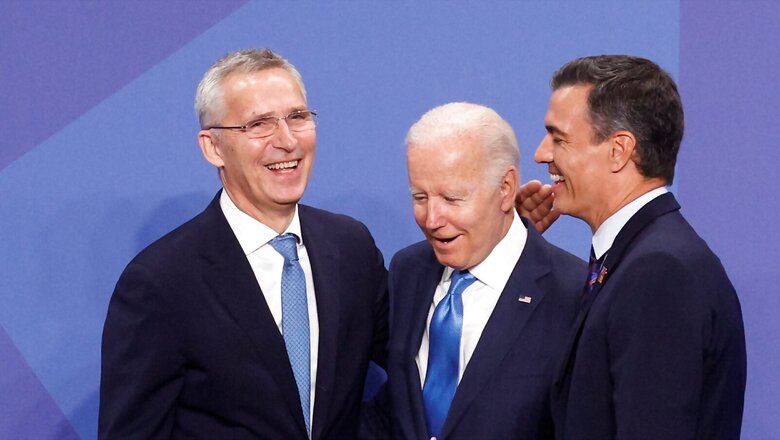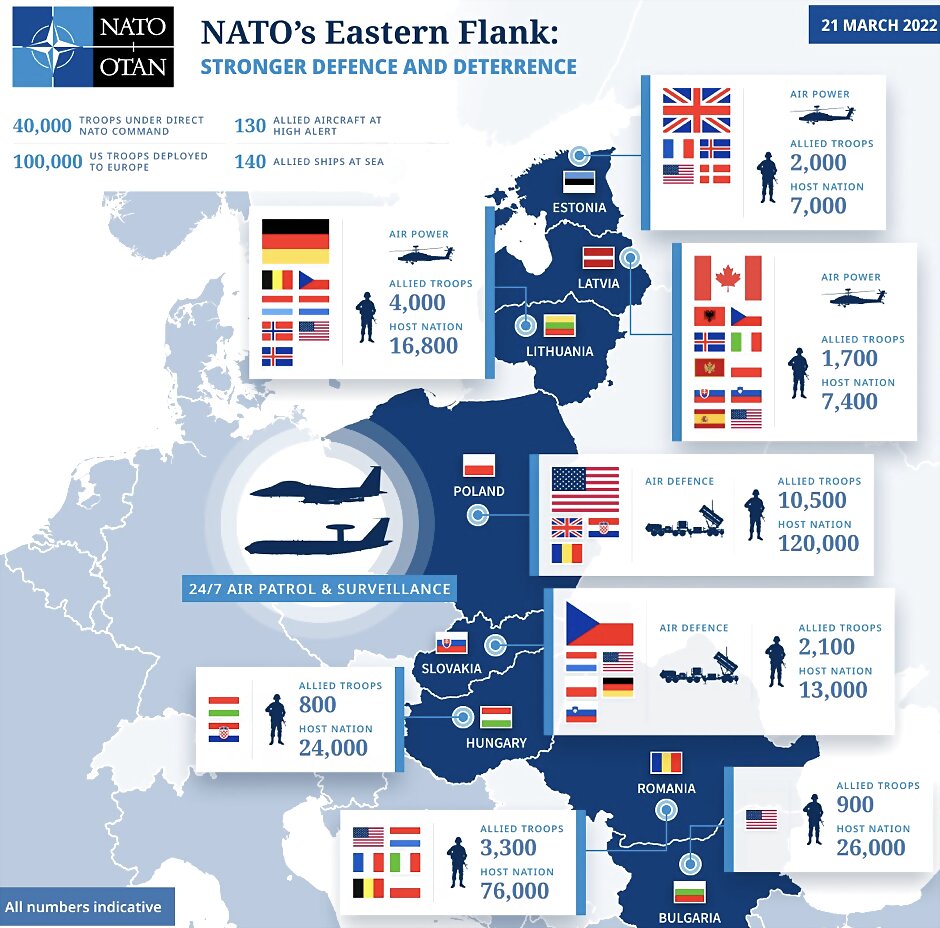
views
The incitement of Ukraine and historical use of the Eastern European country as a proxy by NATO and its most significant members has evidently not led to pleasant outcomes. Having promised Russia that NATO would not expand eastwards following the end of the Cold War and the collapse of the Soviet Union, the West did just that. By 2002, NATO reached right at the doors of Russia, as Estonia was granted membership of the military alliance. All actions taken by Russia ever since have more or less been reactions to growing NATO manoeuvres close to territory governed by Moscow, whether it be the invasion of Georgia in 2008, the annexation of Crimea in 2014, or now, the invasion of Ukraine that is underway.
The invasion of Ukraine by Russia has been an unprecedented escalation. NATO thought it could perpetually use the Ukraine card against Russia, only to discover its plans getting obliterated on February 24, when President Vladimir Putin launched what he called a “special military operation” against Ukraine.
Also Read: As NATO Capitulates Before Turkey, Western Hypocrisy on Human Rights Enters New Low
NATO has now found new playgrounds. Estonia and basically every country in Eastern Europe will soon be fortified in anticipation of Russian invasions. The NATO summit in Madrid ended with leaders giving their go-ahead to increase the size of NATO’s rapid response forces in Europe from 40,000 to 300,000. That is a huge and very significant jump.
NATO’s Plans for Estonia, Cyprus and the Black Sea
If there is one country that has initiated a campaign to defang Russia even more enthusiastically than the United States, it has to be the United Kingdom. As it announced £ 1 billion in extra military support for Ukraine at the end of the NATO summit, Britain also informed that it will be committing 1,000 troops and one of its two new aircraft carriers to the defence of NATO’s eastern flank. This would take the British troop presence in Estonia to 3,000. Remember, Estonia lies just next to Russia.

The United Kingdom also seeks to strengthen Cyprus by arming it with more Typhoon fighter jets. Separately, London has offered an entire carrier strike group to NATO, which it says will help bolster the security around the Black Sea – a waterbody whose Northern and Western regions have come to be dominated by Russia following the invasion of Ukraine.
Such NATO presence in Europe was last seen at the height of the Cold War. That in no way is a silver lining on the horizon, considering the fact that Russia and its CSTO allies are separated from a war with NATO by a margin as thin as the width of a razor blade.
Germany, on its part, has pledged one entire brigade (3,000 – 5,000 troops) for the defence of Lithuania alone. For NATO, Berlin has promised an entire division comprising around 15,000 troops.
Finland and Sweden
Finland and Sweden were neutral countries not very long ago. After the invasion of Ukraine, however, they abandoned their neutrality, and began sending feelers to NATO. Then, they applied to join the military alliance, but their application got stonewalled due to opposition from Turkey – which itself is a NATO member state. The entry of any country into NATO must have the unanimous backing of all member states.
Turkey recently lifted its objections, paving the way for Finland and Sweden to become members of NATO. That is a big deal. NATO has now officially invited the two Nordic countries to become its members. The last time a country became enthusiastic about joining NATO – it got invaded. We all know how Ukraine is suffering because it aimed at bringing NATO assets right on the doors of Russia.
Vladimir Putin on Wednesday said that Russia would respond in kind if NATO deployed troops and infrastructure in Finland and Sweden while mentioning that the entry of the two Nordic countries into NATO is not seen as a big threat by Moscow, unlike Ukraine’s potential entry was. “With Sweden and Finland, we don’t have the problems that we have with Ukraine. They want to join NATO, go ahead,” Putin said, adding, “But they must understand there was no threat before, while now, if military contingents and infrastructure are deployed there, we will have to respond in kind and create the same threats for the territories from which threats towards us are created.”
Coupled with NATO’s dramatic increase in forces and military hardware in the Eastern Flank, it is safe to assume that both sides are on the brink of armed conflict. The massive build-up by NATO will not go down well with the Kremlin, which has shown it is not concerned with its image any longer. If Putin thinks Russia’s security is under threat, he will act – notwithstanding the destruction he causes.
NATO – The Barking Dog Without a Bite
Remember how NATO and the European Union opened the Kaliningrad front against Russia, by getting Lithuania to block rail transit into the Russian exclave? Russia was infuriated and made it absolutely clear to Lithuania that it would have to bear the consequences of its act – even if the move had been made at the EU’s behest.
Now, according to Reuters, the European Union is backtracking. Trade through Lithuania into Kaliningrad could return to normal “within days” following Russia’s threats to Europe at large and Lithuania in particular.
Also Read: Why Kaliningrad Could Soon Become Ground-Zero for a Russia-NATO War
The European Union – most of whose members are also part of NATO – stepping back and working out a compromise on the Kaliningrad front shows yet again how the grand military alliance aces the stage when it comes to anti-Russia rhetoric, but folds in face of the slightest threat coming from the Kremlin.
NATO, led by the United States made Ukraine believe that if Russia were to invade the Eastern European country, it would have to face the full might of the Western democratic world. That, evidently, did not happen. Now, Ukraine is scrambling to survive as a nation.
This begs the question, should Sweden, Finland, Estonia, Cyprus; or any NATO member state in Europe trust the alliance they are a part of? Article 5 of NATO, which sees an attack on one member state as an attack on all has coincidentally been invoked only once in the history of the alliance – after the 9/11 attacks on the United States. Whether NATO protects the interests of all member states or serves those of one superpower alone, is for the countries part of the alliance to figure out.
Read all the Latest News, Breaking News, watch Top Videos and Live TV here.

















Comments
0 comment